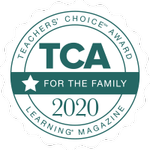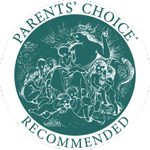Use purple in design when you want a well-balanced product or space.
What color does Red & Blue make? Absolutely Stunning!
Red is as powerful and strong as blue is calm and cool. And when they’re mixed, they create this beautiful hue – have a look at it!

Red and Blue: An Introduction
10 Stunning Ragdoll Cat Colors: A V.
Please enable JavaScript
What are your favorite type of colors? Are you more attracted to cool colors or do you gravitate towards the warm ones instead? Red and blue are primary colors that create a striking balance when you mix them. Even if you place them together, you can instantly catch how one color harmonizes the other. When we were learning color mixing, we couldn’t help but be astonished by how much we can achieve from primary colors. Yes, red and blue are primary – now let’s see what this actually means and what they create when mixed!
Mixing the primary colors red and blue will give purple. The resulting purple hue depends on the red and blue hues being mixed. If dark red is used instead of brilliant red, it would produce a more toned-down purple instead of a vibrant one.
Understanding the Color Wheel and Color Theory
Purple is a mix of red and blue.
Red and blue are primary colors. Mixing red and blue creates a purple hue. The tonal values of this hue could be changed for a lighter or darker purple color. The third primary color is yellow, which is also the complementary color of purple.
Types of Colors
The primary colors are three: red, yellow, and blue. The hue of these simply doesn’t matter, because you can never derive red, blue, or yellow from any other color – and that’s why they’re called primary. When you mix any of these two, you get a secondary color.
Adding to the list, you get a tertiary color when you mix one primary color with any secondary color. So all in all, purple is a secondary color and if you mix yellow with purple, you’ll get a tertiary color – and most probably a brown or a grey since yellow and purple are complementary colors.
color wheel fact
On the color wheel, two colors that are completely opposite to each other are known as complementary colors. Mixing two complementary colors can result in a shade. So if you mix a bit of yellow with purple, you will notice the purple hue getting darker.
Creating tonal values
Tonal values are about the lightness or darkness of a hue. It is what helps create contrast in art and design projects. To create contrast, you would need neutral colors – namely white, grey and black. For some colors, brown hues could be used for creating tones as well.
Here is how you can create contrast:
Tints: You can create the ‘tint’ of a color by adding white to the particular hue. So if you’re adding white to a moderate purple hue, you can expect a softer, pastel version.
Tones: You can create the ‘tone’ of color when you add grey to the particular hue. It is perfect for adding moderate hues- neither light nor dark.
Shades: You can create the ‘shade’ of a color when you add black to the particular hue. Mixing black with purple would result in a dark purple, ideal for creating deep shadows and adding sharp contrast against purple tones.
What You’ll Need
- Paper
- Printer or Coloring Utensils (pens, colored pencils, crayons, etc.)
- Scissors
- Glue
- Game Templates
- Mix It Up Game Board
- Primary Color Cards
- 6-Sided Dice + Rory Game Pieces
Game Setup:
1. Print out the Primary Color Cards template (print extra to reshuffle less frequently), the game board, and the dice/game piece templates.
- If you don’t have a printer handy, then you can draw your own templates or design your own game board and game pieces.
- To use your computer/tablet screen, ask an adult to trace the template:
2. Open the three linked game templates.
3. Tape a sheet of white paper onto your screen. The light from the screen will illuminate the template design through the paper.
4. Use a pencil or marker to gently trace the outline of the template onto the paper. (Be careful not to press hard which might damage your screen!)
5. Place the board on a flat surface.
6. Cut out the Rory game pieces. Each player will select one piece and place it at the start.
7. Make the dice:
- Use scissors to cut along the solid lines.
- Fold along all the dashed lines.
- Put glue on each of the small, folded tabs.
- Shape the dice template into a cube:
- Connect the small tabs on the top of squares 2 and 4 to square 1. Glue in place.
- Connect the small tabs on the bottom of squares 2 and 4 to square 5. Glue in place.
- Connect the remaining small tabs on squares 1, 2, and 4 to square 6. Glue in place.
5. Cut out each of the primary color cards. Shuffle the cards and place them upside down in a pile next to the board.
How To Play:
1. The youngest player goes first. All players begin at “Start”.
2. Begin your turn by drawing two primary color cards from the pile.
3. Guess what color is created when you mix those two primary colors together. If you draw two cards of the same color, does the color change?
4. If you answer correctly, then roll the dice and move forward the appropriate number of spaces.
5. If you answer incorrectly, wait until your next turn to draw two new cards and try again.
6. First player to reach the “Finish!” wins!
Mixing Paint: Blue and Red



Encourage children to use color names, as well as key terms such as color, paint, and shade; descriptive words such as light, lighter, dark, and darker; action words such as describe, paint, and mix; and science process words such as change, compare, observe, and predict.
Materials
- blue, red, and white paint
- paper
- 2 or 3 paper plates (per child)
- a paintbrush with a small tip or a craft stick (per child)
- chart labeled “Mixing New Colors”
Tell children they will mix two colors of paint, red and blue. What color do they predict these two colors will make? Why do they predict that?
- Have children experiment with mixing blue and red paint. (Later, they can experiment with adding white.)
- Ask them what they noticed:
- How did you make that color?
- How much blue did you use? How much red?
- What other colors do you think you can make?
- Do you have any colors that are exactly the same?
- How are these two colors different?
Encourage children to share and post the “formula” for making a favorite color. Invite them to create a name for the color.
Reflect and Share
Talk about what children observed and discovered while mixing colors of paint. Write their ideas on the chart, “Mixing New Colors.”
If children did some of the activities where they mixed colors of water, ask them to compare mixing colors of paint and mixing colors of water. How were those two experiences different and similar? What did you enjoy mixing the most? Why?
Paint Splat
Previous ActivityNext Activity
Peep and the Big Wide World ® is produced by WGBH and 9 Story Entertainment in association with TVOntario.
Major funding for PEEP and the Big Wide World is provided by the National Science Foundation.
PEEP is the recipient of three major awards:
This PEEP and the Big Wide World material is based upon work supported by the National Science Foundation under Grant No. 1222607. Any opinions, findings, and conclusions or recommendations expressed in this material are those of the author(s) and do not necessarily reflect the views of the National Science Foundation.
© 2023 WGBH Educational Foundation
© 2023 WGBH Educational Foundation. All rights reserved. Peep and the Big Wide World and the Peep characters and related indicia are trademarks of WGBH Educational Foundation. All third party trademarks are the property of their respective owners. Used with permission. “Peep,” “Quack,” “Chirp,” “Tom” and “Nellie” were originally created by Kai Pindal for the National Film Board of Canada productions The Peep Show, © National Film Board of Canada, 1962, and Peep and the Big Wide World, © National Film Board of Canada, 1988. Peep and the Big Wide World ® is produced by WGBH and 9 Story Entertainment in association with TVOntario. Major funding for Peep and the Big Wide World is provided by the National Science Foundation. This material is based upon work supported by the National Science Foundation under Grant No. 1222607. Any opinions, findings, and conclusions or recommendations expressed in this material are those of the author(s) and do not necessarily reflect the views of the National Science Foundation.








